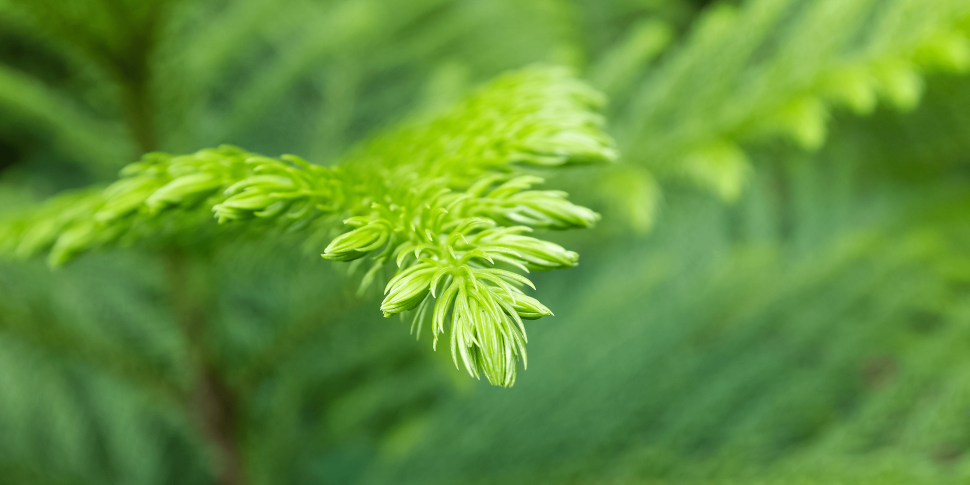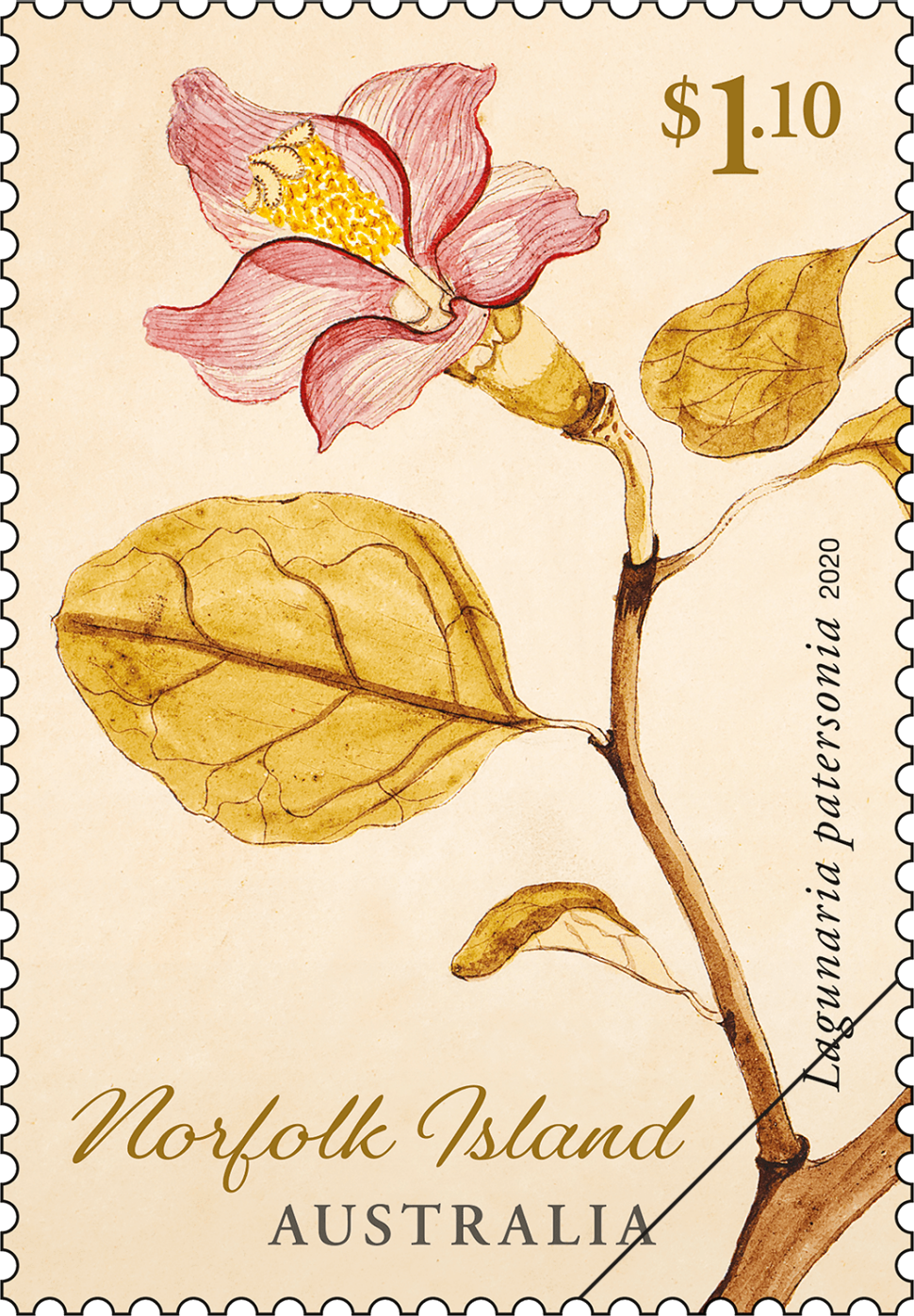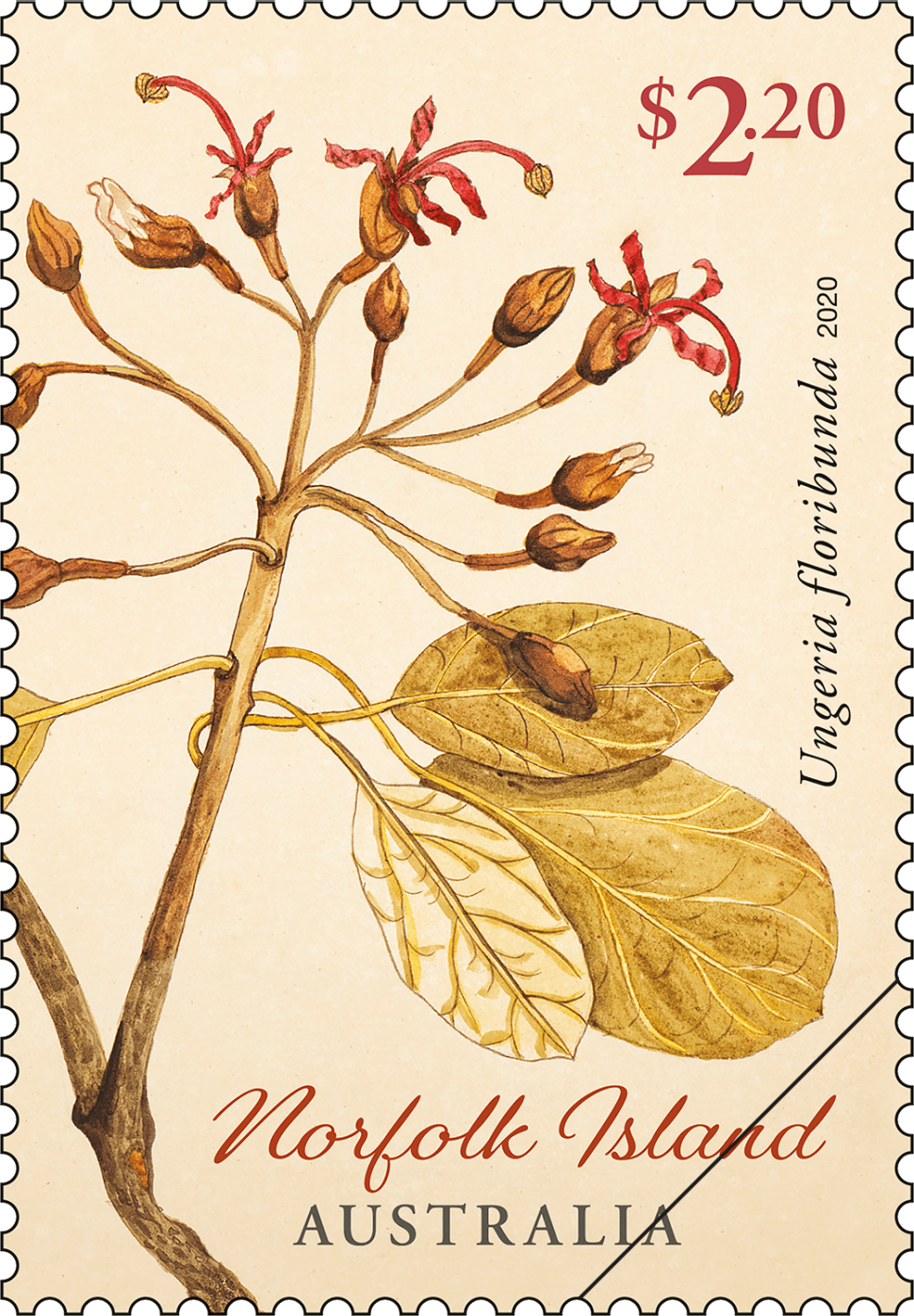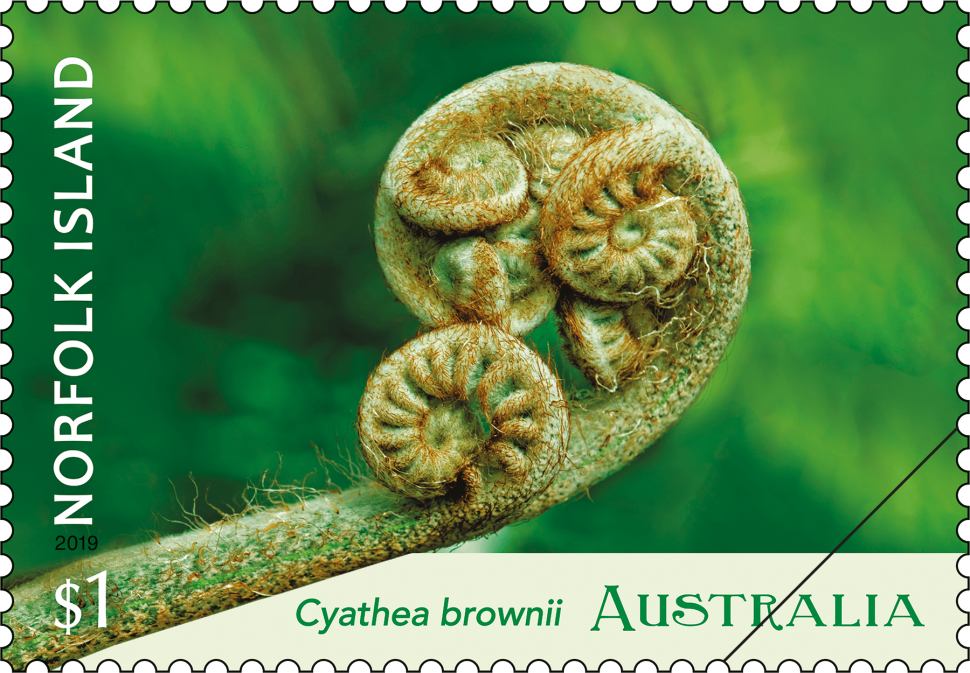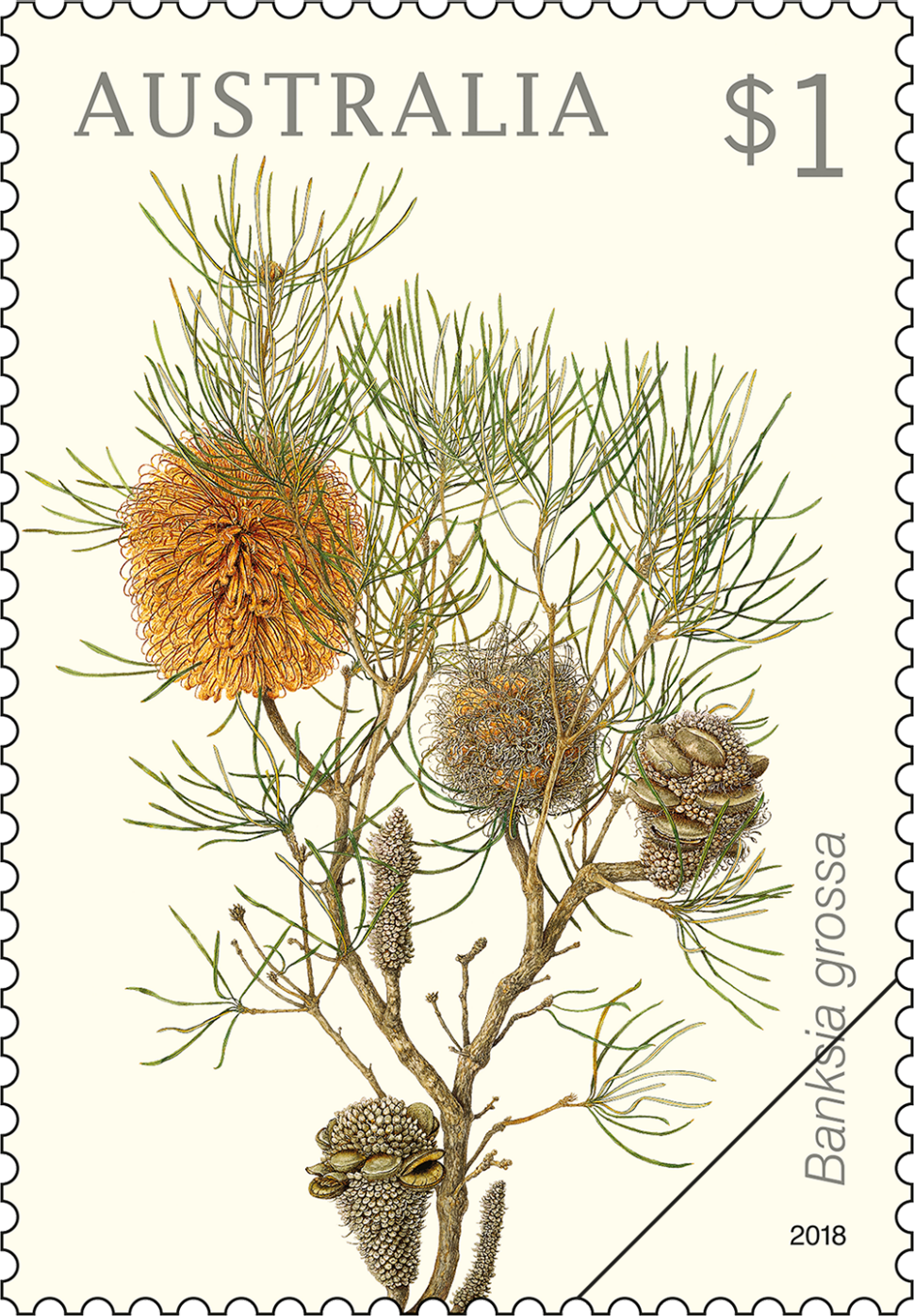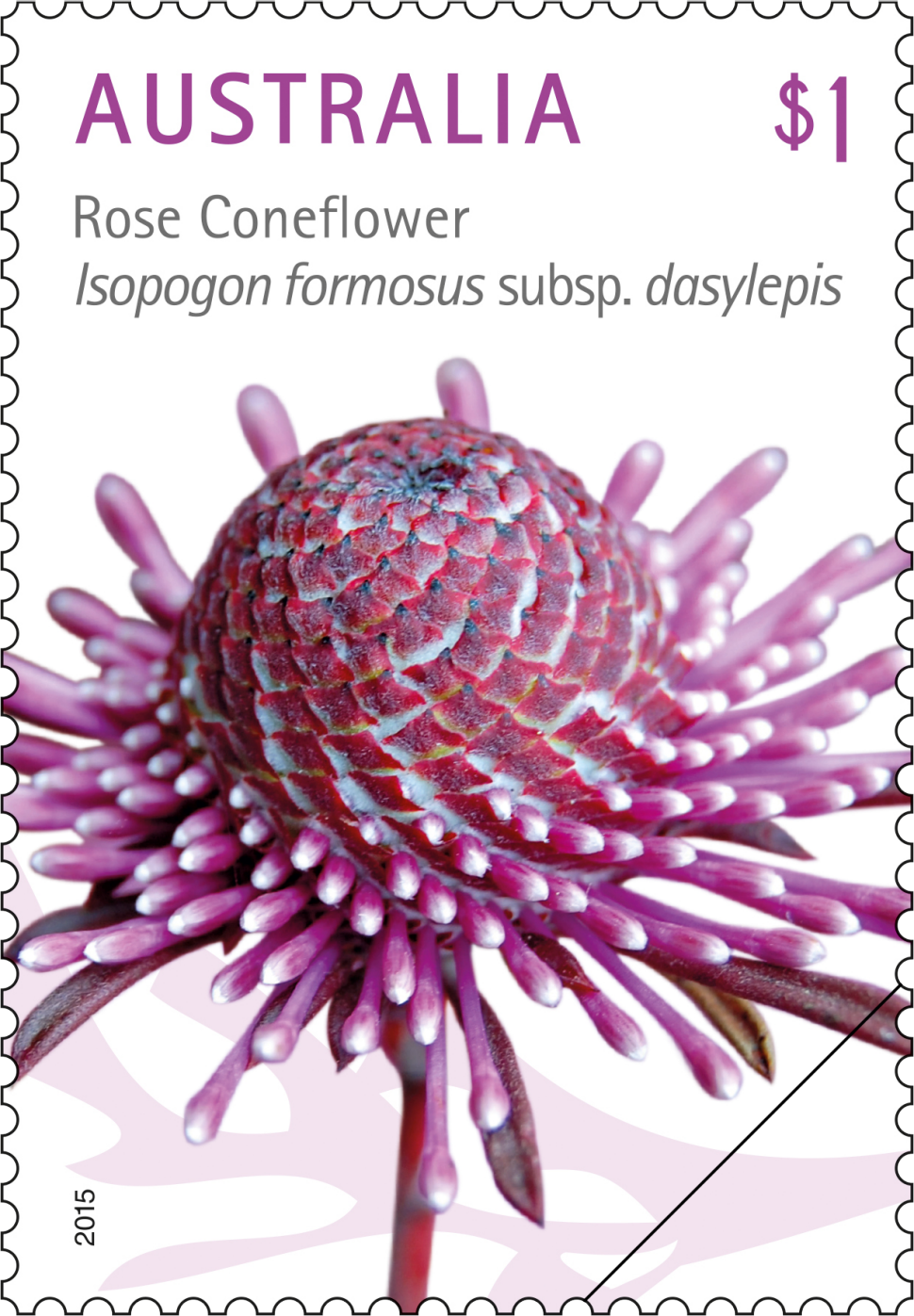Overview
Situated between temperate and tropical oceanic environments, Norfolk Island has nearly 190 native flora species, with around 40 species and one genus being endemic. Prior to European settlement of the island, the vegetation largely comprised subtropical rainforest. Early British visitors – first Cook’s 1774 voyage and then Philip Gidley King’s in 1788 – remarked on the denseness of the vegetation. The destruction of the island’s natural flora began with the land clearing and building program introduced with convict settlement (1825–55). Today, much of the island’s botanical diversity is restricted to the National Park and Botanic Garden, which covers around 14 per cent of the island.
The earliest examples of botanical art from Norfolk Island are from the late 18th century. A body of works is attributed to convict John Doody, who arrived in the colony of New South Wales in 1791 with the Third Fleet, before relocating to Norfolk Island as a servant to Captain William Paterson. It is believed that Doody is responsible for a wonderful collection of watercolour, ink and pencil works of around 50 flora species, which are held in the collection of the State Library of New South Wales. It is thought that the illustrations were possibly made for Paterson, who was in correspondence with British botanist Joseph Banks with regards to the natural history of Norfolk Island.
Technical specifications
- Issue date
- 14-January-2020
- Issue withdrawal date
- 31-July-2020
- Denomination
- $1.10 x 1, $2.20 x 1
- Stamp and minisheet design
- John White, Australia Post Design Studio
- Product design
- Simone Sakinofsky, Australia Post Design Studio
- Paper: gummed
- Tullis Russell Red Phos.
- Printer
- Ego
- Printing process
- Offset lithography
- Stamp size (mm)
- 26 x 37.5
- Minisheet size (mm)
- 135 x 80
- Perforations
- 14.6 x 13.86
- Sheet layout
- Module of 50
- FDI Postmark
- Norfolk Island NSW 2899
- FDI withdrawal date
- 11-February-2020
Lagunaria patersonia (subspecies patersonia shown on the stamp) is a common species that also occurs naturally in Lord Howe Island and has been cultivated elsewhere. This pink-flowering tree is commonly known as the Norfolk Island hibiscus or the white oak, and it can reach 12 to 20 metres.
Ungeria floribunda belongs to Norfolk Island’s only endemic flora genus. Its common name is bastard oak, an apparent reference to its timber, which is considered of inferior quality. As the stamp artwork shows, it bears deep pink flowers. It grows to around 15 metres and is listed “vulnerable”.
Shop our stamp collectables
Set of stamps:
This set of stamps contains the two stamps from the Norfolk Island: Early Botanical Art stamp issue.
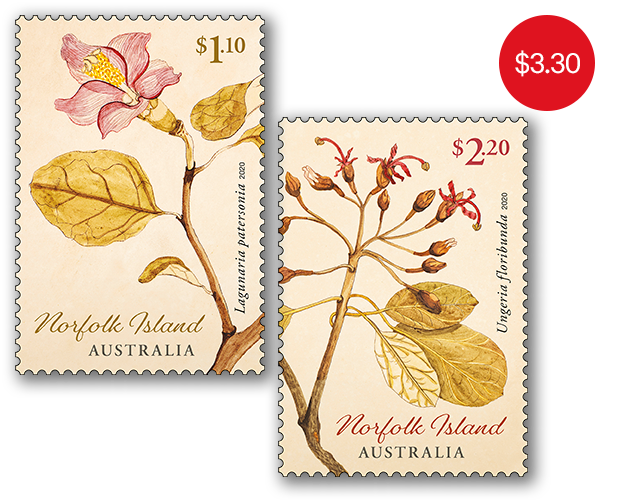
Minisheet:
The Norfolk Island: Early Botanical Art minisheet consists of the two stamps from the issue incorporated into a miniature stamp sheet.
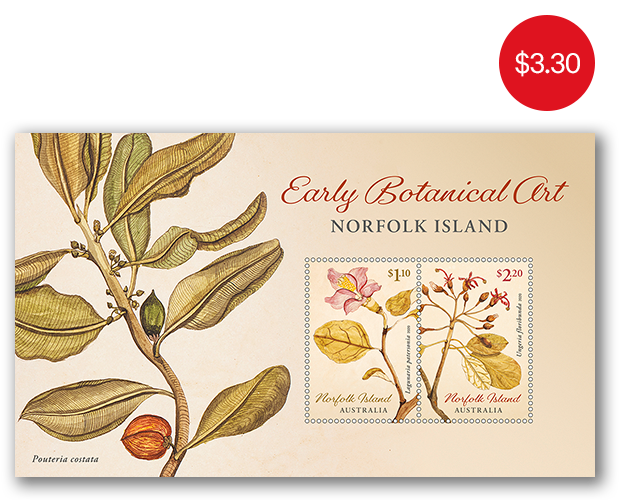
Gutter strip:
The gutter strip consists of 10 x $1.10 Lagunaria patersonia stamps from the Norfolk Island: Early Botanical Art stamp issue.

Gutter strip:
The gutter strip consists of 10 x $2.20 Ungeria floribunda stamps from the Norfolk Island: Early Botanical Art stamp issue.

- Set of stamps
- Minisheet
- Gutter strip
- Gutter strip
Additional products:
- Pictorial envelope for the Norfolk Island: Early Botanical Art stamp issue
- First day Norfolk Island: Early Botanical Art minisheet cover
- First day Norfolk Island: Early Botanical Art gummed stamps cover
This content was produced at the time of the stamp issue release date and will not be updated.
